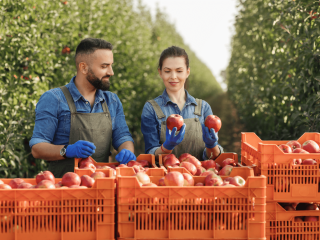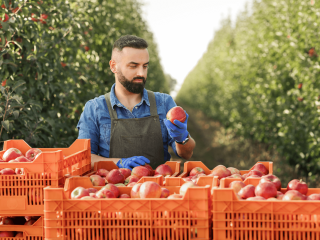
Handling living products
Harvested plant parts such as leaves and fruits are still alive. Quite some processes in plants, even when harvested, are similar to processes in animals. For example, plant material breaths: it takes up oxygen, and releases heat and carbon dioxide. It can lose water through transpiration. Also, as any living organism, the plant material still develops as it gets older. Ripening and senescence occur, and sooner or later it will die. By understanding that plants are alive, it becomes clear that one should take care of the product, in order to maintain the product quality for longer.
Directly to
Respiration
All fresh products respire. The respiration process has high similarities with human breathing. In the cells sugars or other organic substances are used to produce energy. This energy is necessary to stay healthy. This respiration process requires oxygen (O2). Like humans, fresh products, can suffocate if there is not enough oxygen available. In the respiration process carbon dioxide (CO2) and heat are produced. This CO2 can accumulate in packages or rooms when not ventilated. The heat is usually removed by cooling to keep the product at their optimal storage temperature. A reduction of O2 or increase of CO2 can inhibit the respiration process. In practice, these changes in gas levels are also deliberately applied to inhibit ripening and/or senescence.
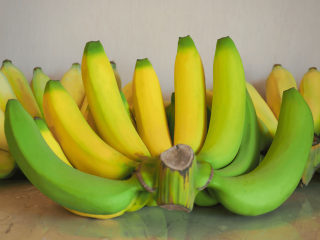
Ethylene
Ethylene is also called the ripening hormone. It is very relevant for the ripening of many fruit species. Most fruits produce ethylene to start the ripening process. Its action can be seen as positive when it leads to ripe and tasty products. Ethylene gas is even artificially supplied in some cases to regulate ripening, for example for the ripening of bananas, mangoes and avocados. But in many cases, the presence of ethylene is undesirable. It limits storage time when fruit ripens too quickly and becomes overripe. Further, ethylene can activate the senescence process (aging) in sensitive vegetables. As with respiration, a reduction of O2 or increase of CO2 can inhibit ethylene-related processes and thereby inhibit ripening and/or senescence.
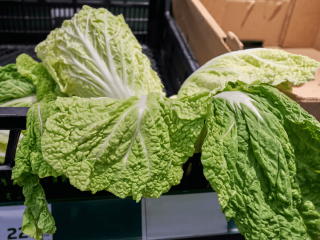
Moisture loss
Especially in drier environments, the fresh products lose moisture. A little water loss is not harmful to the quality, it does not lead to visible symptoms. Some water loss may even be necessary to prevent mold growth or tissue browning of fruits. However, moisture loss can lead to shriveling or wilting of horticultural produce. The permissible water loss differs per commodity. Apples start to show shriveling symptoms when they have lost approximately 4-5% of water. Spinach easily shows wilting. A commodity such as squash can tolerate a high water loss before any symptoms occur.
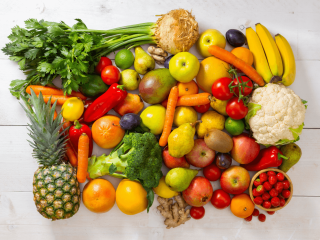
Ripening and senescence
After fruit growth is completed before harvest, ripening is a natural process with the aim to become attractive for consumption. Changes in colour, texture, aroma and nutrients occur. A further progression towards death or decay is called senescence. The yellowing of harvested lettuce is an example of a senescence process. Ripening and senescence after harvest can be influenced by many factors, especially by temperature. This is relevant for the fresh supply chain. The shelf-life of products is especially relevant for consumers. This means how long the fresh products can be kept under consumer conditions and are still acceptable to eat. In general, the shelf life becomes shorter as the fresh product ages.
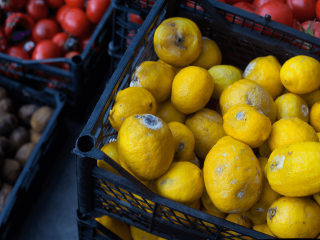
Diseases
Plant material can suffer from pathogenic infections. This can sometimes be seen from the outside, for example with skin diseases. But often it starts internally. There are many different pathogens such as Botrytis (grey mould), Fusarium, and Anthracnose. Strawberry is one of the products that easily gets rotten, especially if it gets injured. Botrytis then covers the fruits. When the temperature and humidity in the environment are high, mould growth can develop faster. This may stay limited to minor superficial infections. But it can also lead to completely rotten products.
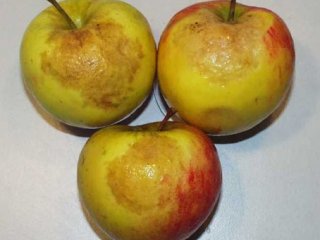
Physiological disorders
Fresh products are vulnerable to disorders. The so-called physiological disorders can have a range of appearances. Examples are external discolorations (skin browning), small brown pits in the skin, severe browning of fruit tissue and glassy appearance of fruit flesh. The cause can also be very broad. It can come from the field, such as discolorations caused by mineral deficiencies in the soil. It can also be caused by factors after harvest. In this case, low temperature, high temperature, low oxygen, high carbon dioxide, or a combination of these factors often play a role.
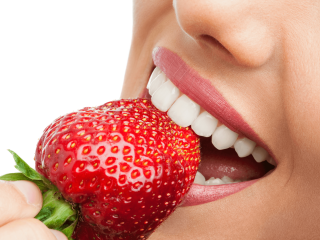
Flavour
Another important characteristic of the living products is the flavour, at the same time a very important quality factor for the consumer. This consists of various aspects like aroma, the acid/sweetness ratio and texture. It is subject to change during the postharvest phase. This can be positive, for instance when ripening leads to tastier fruit. Unfortunately, the flavour can also decrease in the fresh supply chain. In severe cases, so called off-flavour (or off-taste) develops. The flavour no longer meets the standard for consumption.
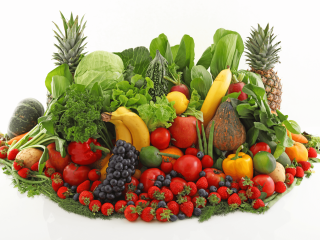
Appearance
Fresh products undergo many changes in appearance during their life. Think of a green tomato that turns red, or green broccoli that turns yellow. The appearance, the way the product looks, also determines the attractiveness for the consumer. Besides positive aspects such as nice colour or shine, it can include aspects like presence of spots, infections, bruises or shriveling. We need to handle the products with care throughout the entire fresh supply chain. These plant materials are sensitive and can get easily wounded and bruised by external mechanical factors.
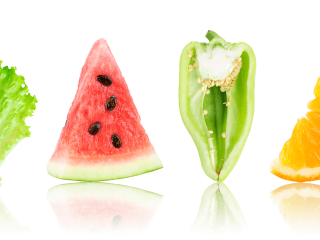
Internal quality
The look of te product does not always represent its internal appearance. It may be okay or it can turn out to be a disappointing when consuming. The nutritional composition of the product is also important. For example, ascorbic acid functions as an antioxidant in the plant cells. For us, the consumers, ascorbic acid is better known as vitamin C. Once harvested, the produce will not take up any new nutrients. But the nutrient composition can still change as part of life.

Temperature
Lowering the temperature slows down almost all life processes. A fast cooling also slows down the respiration and ethylene related processes. This delays the ripening and senescence and thus leads to a better quality retention. Especially for products with a short storage potential, optimisation of the cooling down process is important for life extension and therefore quality retention. Examples are strawberries, cherries and lettuce. However, too cold temperatures should be avoided as these can lead to product damages like chilling injury or frost damage.
